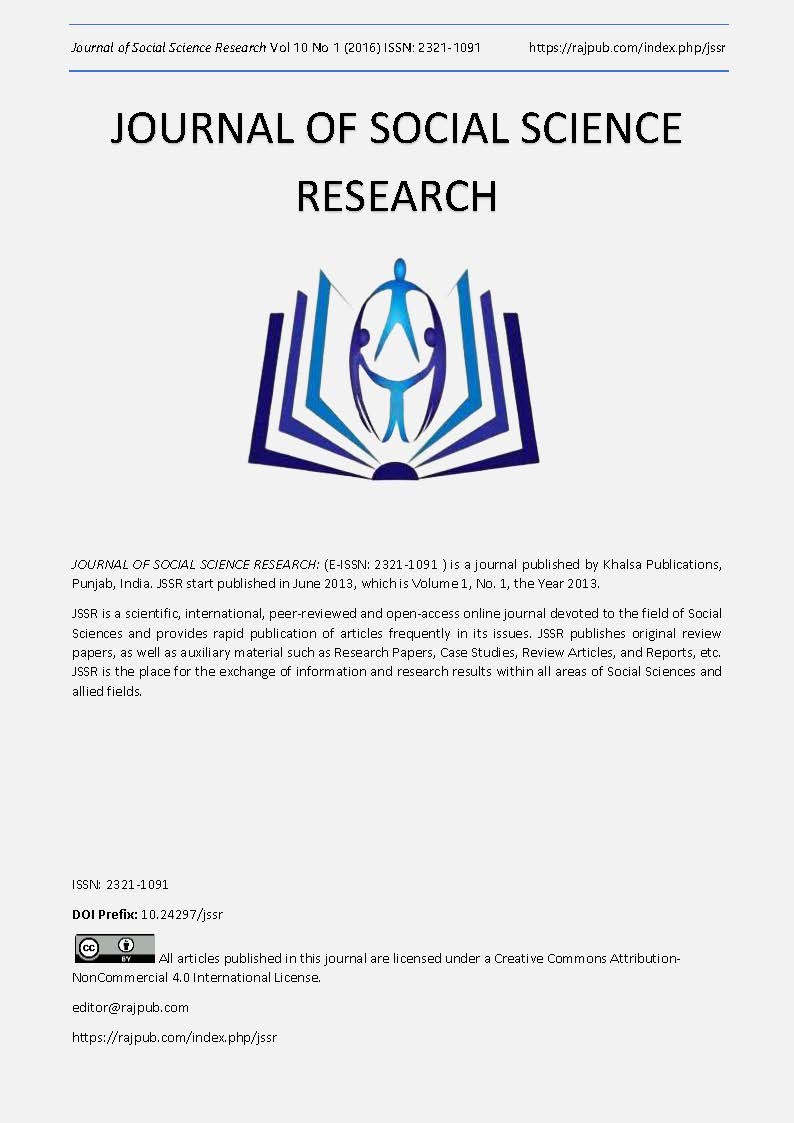The importance sports activities have over the quality of life in the adult population
DOI:
https://doi.org/10.24297/jssr.v10i1.6601Keywords:
Quality of life, sports activities, adult populationAbstract
The quality of life is a wide spread concept which essentially handles the overall prosperity within society, the importance of it increasing starting with the 1970s, together with the social studies research. An European poll concerning the quality of life in Europe (2003-2007), performed by the European Life and Work Condition Improvement Foundation, noted the existence of some major differences between countries and social groups, as far as numerous aspects of quality of life are concerned. Thus, we can see that social groups with a below average quality of life must progress in a faster pace than the leader groups. In Romania, based on a general evaluation, we can state that the quality of life level is a modest one, this statement being the more valid as we take into consideration the economic standard - from macro-economic indicators of living standards (GDP/capita, Finances available to the population) and average income/household to life expectancy at birth indexes (Mărginean, I., 2010, pp. 231-237). The main component of the quality of life, health, can be maintained and improved by performing sports activities, where the main element is performing workouts, which, applied on a long term, improves the physical and mental health, having a positive contribution on the learning and personal development processes and to reducing the risk of physical and psychological conditions associated with the modern lifestyle.
Downloads
References
[2] Liu Ben – Chien. 1975. Quality of Life: Concept, Measure and Results. în Revista The American Journal of Economics and Sociology. vol.34. nr.1. january.
[3] Lucuț, G. and Rădulescu, S.M. 2010. Calitatea vieţii şi indicatorii sociali. Editura Lumina Lex, Bucureşti.
[4] Mărginean, I. 2010. Calitatea vieţii în România: Prezent şi Perspective. Revista Calitatea vieţii. XXI. nr. 3-4. Bucureşti.
[5] Mărginean, I. 2013. Calitatea vieţii în Uniunea Europeană. Cercetare 2011. Revista Calitatea vieţii. XXIV. nr. 3. Bucureşti.
[6] Peterloff, H. and Wingo, I. 1961. Natural Resource Endowment and Regional Economic Growth, în lucrarea Natural Resource
[7] Sen, A. 1993. Capability and Well – Being in Nussabaum Martha and Sen Amarthya (editors). The Quality of Life. Oxford. Claredon Press.
[8] Șerban, O., Ioan, P., Salomea, P. and Delia, B. 2012. Calitatea vieții persoanelor diagnosticate cu boli rare în România. Revista Calitatea Vieţii. XXIII. nr. 2. Bucureşti.
[9] http://adevarul.ro/news/societate/eurobarometru-60-romani-nu-fac-niciodata-sport-1_533068b40d133766a830b537/index.html
Downloads
Published
How to Cite
Issue
Section
License
 All articles published in Journal of Advances in Linguistics are licensed under a Creative Commons Attribution 4.0 International License.
All articles published in Journal of Advances in Linguistics are licensed under a Creative Commons Attribution 4.0 International License.




